Laying tiles on drywall: an overview of the nuances of installation work
Drywall is an excellent building material, which allows to reduce the time of an extensive number of repair work and redevelopment stages. With its help, impeccable leveling of surfaces is quickly performed, new architectural forms are created.
Subsequent surface finishing that is altered, formed, or leveled using this technologically advanced, practical material is not difficult. Tile on gypsum board perfectly lays down, it can be painted, pasted over with any kind of wallpaper.
Content
The advantages of drywall, as the basis for laying tiles
The main technical condition for laying tiles on any of the internal surfaces is the absence of differences and irregularities, for which, according to an established tradition, plaster, cement-sand, gypsum mortars were used. A worthy alternative to time-consuming leveling with the use of mixtures was the process of installing gypsum boards, which takes less time and less effort from repairmen.
Neither dust, nor dirt, nor a long waiting period for the moment when, after the leveling layer has hardened, it will be possible to start facing - this entire list of negatives excludes drywall.
The simplest laying of tiles on drywall with a video clip is demonstrated in detail. Fundamentally, the scheme is no different from the usual standards. However, there are some nuances that need to be taken into account.
Even perfect tile laying will not look perfect if at the final stage of finishing you do not pay enough attention to the tile seams. The voids between the joints are filled with a special material - grout (fugue). Read about how to choose a suitable grout for a tile:https://floor.expertexpro.com/en/pol-pokritiya/plitka/kak-vybrat-zatirku-dlya-plitki.html.
Which drywall to choose for work?
Sheets made of gypsum fiber are produced by semi-dry pressing of a mixture comprising gypsum as a binder and fluff pulp.
The material is safe in environmental and fire terms, has high strength indicators, excellent thermal insulation characteristics.
It is used to build a prefabricated base for laying flooring, for cladding wood structures, for leveling ceilings and walls, for decorating loggias.
Universal material can be installed by an inexperienced novice, and, having learned how to put tiles on drywall, he can cope with the subsequent finishing of a surface that is even or formed by him.
The industry supplies two types of gypsum fiber sheets that differ in properties and scope:
- GVL - material used for repair and redevelopment of rooms, classified under SNiPa II-3-79 as premises with stable dry or normal moisture and temperature levels.
- GVLV is a material with a special hydrophobic impregnation, with the use of which tiles are laid on drywall in bathrooms and in kitchen rooms.
Ceramic tiles are usually laid in rooms, operating conditions in which are associated with vaporization, and therefore, with a high level of moisture. Therefore, to level the surfaces in them, followed by tiling, moisture-resistant sheets with a GVLV nomenclature are recommended.
Dry-absorbing gypsum plasterboard without hydrophobic impregnation can warp during drying of the adhesive mixture from moisture absorbed by the leveling material from the binder composition. Therefore often clinker coverings are laid in the halls or in the hallways, and tiles in the bathroom on drywall with water-repellent properties.
After the decoration of the rooms with tiles is completed, the question often arises of how to drill tiles in order to hang various holders, hangers, mirrors and other objects. Let's talk about how to make neat holes and not damage the tile:https://floor.expertexpro.com/en/pol-pokritiya/plitka/kak-prosverlit-kafelnuju-plitku.html.
Glue for facing gypsum plasterboard surfaces
Before purchasing glue, it is necessary to study the manufacturer's information about which surface the adhesive is compatible with.
For gluing ceramic tiles to gypsum-plated surfaces, industry has proposed different compositions:
- adhesive with cement content, which can be processed paper base;
- elastic adhesive for tiles, sold in the form of a dry one, intended for self-preparation by diluting water with a mixture, or in the form of a solution fully prepared for application;
- "Liquid nails" - a strong binder with water dispersion as a base.
It is necessary to prepare the adhesive mixture, strictly following the manufacturer's recommendations listed on the packaging, then the ceramic tile on the drywall will lie without defects, will not peel off.
Do not immediately knead a large volume of dry mix to adhere the tiles. It is recommended to prepare the solution in the amount necessary for processing the plot of not more than 0.7-1.0 m² in area.
The process of laying ceramic tiles on plasterboard cladding
Owners who do not know how to lay tiles on drywall should not be confused by some technological difficulties. Fundamentally, the operation scheme is equivalent to mounting the tile on any level surface.
Installation of drywall sheets
Guide strips should be placed under the drywall sheets. The recommended distance between the slats is 40 cm. If this size is exceeded, the surface can “walk”, which will entail a gradual peeling off of the tile and deformation of the joints.
Sheathing sheets are attached directly to the guide rails using self-tapping screws or staples, for fixing which a construction stapler is used. According to Western technologies, laying ceramic tiles on drywall often involves alignment with two layers of sheets. Guide strips are located only under the lower layer.
The distance between the slats installed under the plasterboard leveling layer should be reduced if thin sheets were used for the subfloor installation.
Instead of guide strips, a stucco mesh can be used to prevent swelling of the cardboard layer. To increase the strength of the structure, repairmen often stack both trims and a grid. The mesh is fixed with PVA glue and duplicated with construction brackets.
You will find more information about the features of gypsum board tiling in the material on our website:https://floor.expertexpro.com/en/pol-pokritiya/plitka/pravila-ukladki-kafelya-na-gipsokarton.html.
Putty and primer on sheathed surfaces
Then follows the direct preparation of drywall for tiles. All butt joints between the sheets must be treated with putty to increase the stability of the base and the formation of a monolithic structure. For this you need to choose a putty that is purposefully produced for the processing of joints of drywall sheets.
Then the surface created from gypsum-fiber sheets is treated with a special primer, compatible with the material and used for mounting tiles with glue. The primer required to optimize adhesion is applied in two layers with a paint roller, a regular paint brush or a gear grater.
Bonding ceramic tiles to drywall
Tile on a baseboard is laid according to the standard scheme for the installation of any tile:
- with a trowel, an adhesive solution is applied to a plot of 0.7-1.0 m²;
- the tile is pressed with force to the surface being trimmed, it is necessary to increase the strength of fastening with a wooden or plastic hammer equipped with a rubber nozzle;
- to create smooth technological seams, it is necessary to use plastic crosses;
- the lining should dry as long as indicated by the manufacturer of the adhesive;
- finish work grouting, which will need to be coated with a special varnish.
Do not stack immediately more than four to five rows. After installing the tiles in each of the small sections, it is recommended to take an hour break, which is necessary to eliminate the stress arising in the base.
Summary
Having learned how to glue tiles on drywall, and following all the recommendations, the economical owner will not spend money on ordering the services of repairmen. With this repair operation, the contractor may well cope without experience.


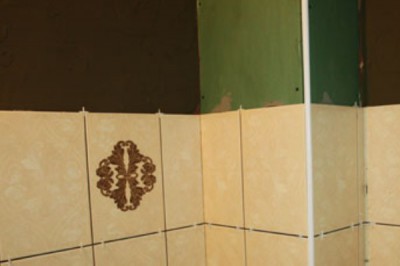
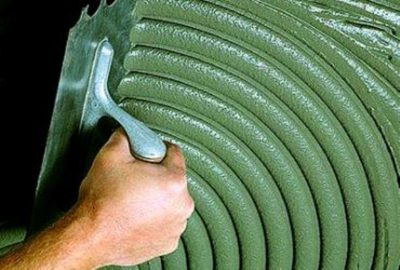
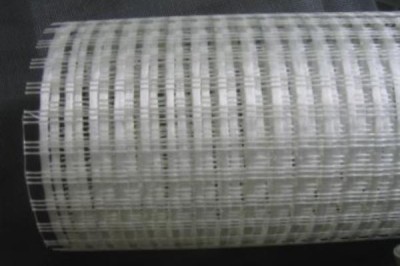
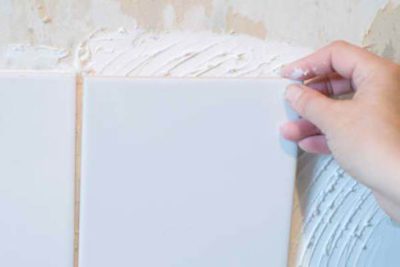

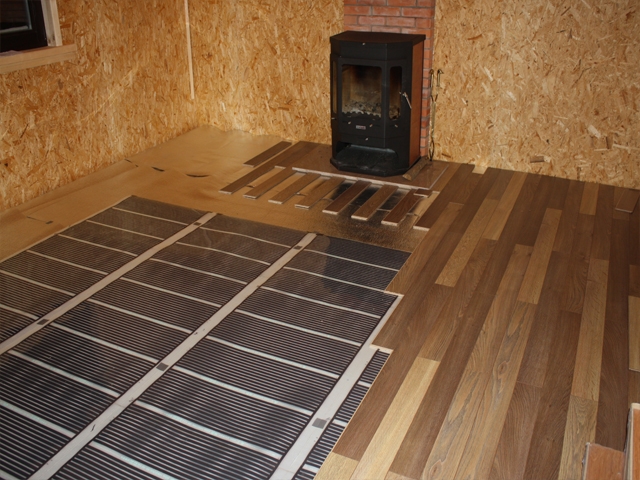

5 comments